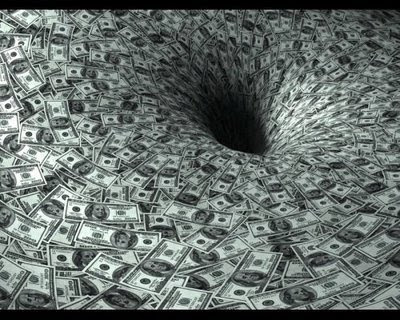 As regular readers know, I often reference articles that I consider well though-out, particularly those that address current macroeconomic topics, as I am an individual investor saving for near-term retirement in a world that in my view punishes savers and rewards the reckless (or at least used to, until recently).
As regular readers know, I often reference articles that I consider well though-out, particularly those that address current macroeconomic topics, as I am an individual investor saving for near-term retirement in a world that in my view punishes savers and rewards the reckless (or at least used to, until recently).Steve Saville is among the economic analysts that I consider "very smart." He has recently written a short article, entitled "Inflation Update," that very simply and concisely sums up the present money supply and inflation issue in terms of the economic sectors that are most and least likely to "benefit" from excess central bank money printing. This is a notoriously tough area to call, as the winners and losers are different in every inflationary cycle, causing almost all pundits to be wrong on this topic almost every time!
 Basically, Mr. Saville is saying that in sectors where there is excess supply, there will be no net benefit of Federal "moneyprinting." In fact, these sectors will sustain further deterioration. In our present situation (I'm referring primarily to the US, Britain and much of Western Europe), there are too many homes and too many labourers, thus precluding the flow-through benefits of inflation in these particular, already-beleaguered, sectors. That is, salaries do not rise and home prices fall, despite massive infusions of newly-printed dollars in circulation.
Basically, Mr. Saville is saying that in sectors where there is excess supply, there will be no net benefit of Federal "moneyprinting." In fact, these sectors will sustain further deterioration. In our present situation (I'm referring primarily to the US, Britain and much of Western Europe), there are too many homes and too many labourers, thus precluding the flow-through benefits of inflation in these particular, already-beleaguered, sectors. That is, salaries do not rise and home prices fall, despite massive infusions of newly-printed dollars in circulation.So what rises in value when the Federal Reserve Bank prints new money out of thin air? As I have often noted here, the costs of necessities are presently most under pressure, as they are relatively scarce in a world facing dramatically increasing Asian, Middle Eastern and, in selected cases, third world demand (in the case of commodity-exporting third world countries).
 Mr. Saville refers in particular to energy and hard assets as sectors that will see price rises as a consequence of concerted global government-sanctioned inflationary policy, though many other necessities are also scarce relative to the vastly increasing quantity of printed (and electronically-created) money now in circulation (think insurance, government services, infrastructure, food, fertilizer, health services, postsecondary education, peace, safety and security - I could go on....).
Mr. Saville refers in particular to energy and hard assets as sectors that will see price rises as a consequence of concerted global government-sanctioned inflationary policy, though many other necessities are also scarce relative to the vastly increasing quantity of printed (and electronically-created) money now in circulation (think insurance, government services, infrastructure, food, fertilizer, health services, postsecondary education, peace, safety and security - I could go on....).The blowback?
 According to Mr. Saville, the sectors nominally targeted by moneyprinting national central banks actually sustain net losses through inflationary policy --- which has most recently been in effect since the beginning of the Greenspan era at the US Federal Reserve in 1987. In the present case, home prices continue to deteriorate, and the cost of living rises for the long-suffering and now under-employed middle class.
According to Mr. Saville, the sectors nominally targeted by moneyprinting national central banks actually sustain net losses through inflationary policy --- which has most recently been in effect since the beginning of the Greenspan era at the US Federal Reserve in 1987. In the present case, home prices continue to deteriorate, and the cost of living rises for the long-suffering and now under-employed middle class. I think Mr. Saville has succeeded in connecting a lot of dots in a few paragraphs - as well as showing that Austrian "true money supply" (TMS2 below) is still rising at a double-digit clip.
I think Mr. Saville has succeeded in connecting a lot of dots in a few paragraphs - as well as showing that Austrian "true money supply" (TMS2 below) is still rising at a double-digit clip. Read all about it here!
Read all about it here!_













